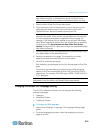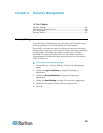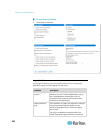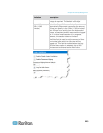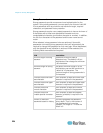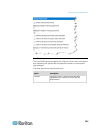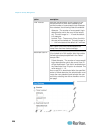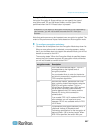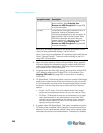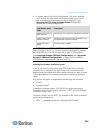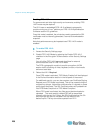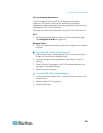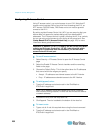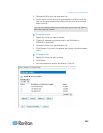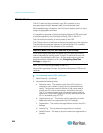
Chapter 9: Security Management
227
Encryption & Share
Using the Encryption & Share settings you can specify the type of
encryption used, PC and VM share modes, and the type of reset
performed when the KX II Reset button is pressed.
WARNING: If you select an encryption mode that is not supported by
your browser, you will not be able to access the KX II from your
browser.
Note that performance may be impacted once encryption is applied. The
extent of the performance impact varies based on the encryption mode.
To configure encryption and share:
1. Choose one of the options from the Encryption Mode drop-down list.
When an encryption mode is selected, a warning appears, stating
that if your browser does not support the selected mode, you will not
be able to connect to the KX II.
The warning states "When the Encryption Mode is specified please
ensure that your browser supports this encryption mode; otherwise
you will not be able to connect to the KX II."
Encryption mode
Description
Auto
This is the recommended option. The KX II
autonegotiates to the highest level of
encryption possible.
You must select Auto in order for the device
and client to successfully negotiate the use of
FIPS compliant algorithms.
RC4
Secures user names, passwords and KVM
data, including video transmissions using the
RSA RC4 encryption method. This is a
128-bit Secure Sockets Layer (SSL) protocol
that provides a private communications
channel between the KX II device and the
Remote PC during initial connection
authentication.
If you enable FIPS 140-2 mode and RC4 has
been selected, you will receive an error
message. RC4 is not available while in FIPS
140-2 mode.
AES-128
The Advanced Encryption Standard (AES) is
a National Institute of Standards and
Technology specification for the encryption of
electronic data. 128 is the key length. When
AES-128 is specified, be certain that your



